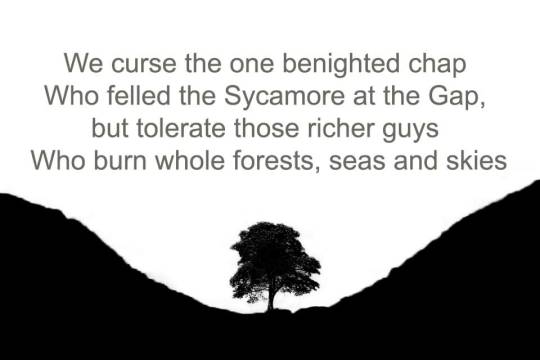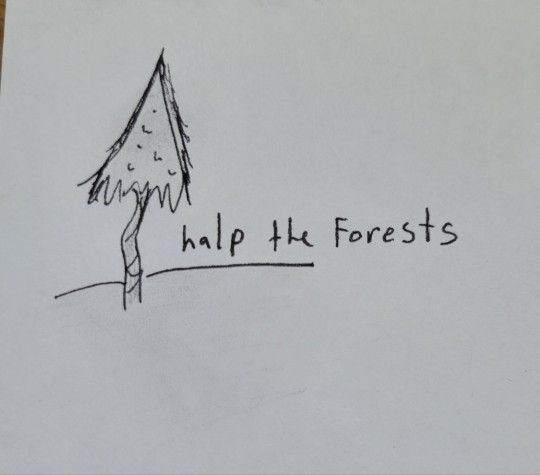#save the rainforest
Text

252 notes
·
View notes
Text
#good news#nature#science#environmentalism#environment#animals#conservation#farming#diversity#birds#endangered species#endangered habitats#diversified farming#land management#costa rica#save the rainforest
21 notes
·
View notes
Text
Vine died because of deforistation
#big buisness took away my goofy six second videos#eat the rich#save the rainforest#the road of life dont work ahead no matter how much we sure hope it does
4 notes
·
View notes
Text
The Tropical Rainforests
At the moment, rainforests are being destroyed by deforestation. Find ways to save the rainforest! Use this link for 10 ways we can save the world.
2 notes
·
View notes
Text
hey divas, anyone else feeling anxious tonite? yaasss
1 note
·
View note
Text
Imma just put this in layman's terms...
The government of Brazil is trying to pass a bill that will let them plunder/steal/destroy indigenous lands in the so-called name of "progress."
A large chunk of the world's oxygen comes from their rainforests. Do y'all really want that gone for some rich bastards' profits?
No?
How about saving the indigenous people that live there and are likely to get annihilated in the name of "progress?"
If you don't want the Brazilian government doing that shit, go sign the petition. Go on, do it.
DOOOOOO IT!!!!!
0 notes
Text

Woodlands and all that reside within them are threatened and in danger. Animals, trees, native people - they are losing their homes.
If the forests themselves could cry out, would you hear their pain?
Humans are the only ones who can save these places and the multitude of lives that call them sanctuary.
#environment#forests#save the earth#human power#save the trees#save the rainforest#eco anxiety#conservation#animals#deforestation#please save us
1 note
·
View note
Text
#Congo#people of congo#congo mines#congo rainforest#congo basin#free congo#congo genocide#congolese#democratic republic of the congo#dr congo#save congo#help congo#important#please boost#signal boost#news#american news
472 notes
·
View notes
Text
#orangutan#rainforest#destruction#fire in my home#no where to go#orangutan extinction#save the rainforest#save the earth#please please please
0 notes
Text

Carla Bruni at the 'Save the Rainforest' gala in
London, May 1992
1 note
·
View note
Text
A huge ancient city has been found in the Amazon, hidden for thousands of years by lush vegetation.
The discovery changes what we know about the history of people living in the Amazon.
The houses and plazas in the Upano area in eastern Ecuador were connected by an astounding network of roads and canals.
The area lies in the shadow of a volcano that created rich local soils but also may have led to the destruction of the society.
While we knew about cities in the highlands of South America, like Machu Picchu in Peru, it was believed that people only lived nomadically or in tiny settlements in the Amazon.
"This is older than any other site we know in the Amazon. We have a Eurocentric view of civilisation, but this shows we have to change our idea about what is culture and civilisation," says Prof Stephen Rostain, director of investigation at the National Centre for Scientific Research in France, who led the research.
"It changes the way we see Amazonian cultures. Most people picture small groups, probably naked, living in huts and clearing land - this shows ancient people lived in complicated urban societies," says co-author Antoine Dorison.
The city was built around 2,500 years ago, and people lived there for up to 1,000 years, according to archaeologists.
It is difficult to accurately estimate how many people lived there at any one time, but scientists say it is certainly in the 10,000s if not 100,000s.
The archaeologists combined ground excavations with a survey of a 300 sq km (116 sq mile) area using laser sensors flown on a plane that could identify remains of the city beneath the dense plants and trees.
—
"The road network is very sophisticated. It extends over a vast distance, everything is connected. And there are right angles, which is very impressive," he says, explaining that it is much harder to build a straight road than one that fits in with the landscape.
The scientists also identified causeways with ditches on either side which they believe were canals that helped manage the abundant water in the region.
There were signs of threats to the cities - some ditches blocked entrances to the settlements, and may be evidence of threats from nearby people.
Researchers first found evidence of a city in the 1970s, but this is the first time a comprehensive survey has been completed, after 25 years of research.
It reveals a large, complex society that appears to be even bigger than the well-known Mayan societies in Mexico and Central America.
—
Some of the findings are "unique" for South America, he explains, pointing to the octagonal and rectangular platforms arranged together.
The societies were clearly well-organised and interconnected, he says, highlighting the long sunken roads between settlements.
Not a huge amount is known about the people who lived there and what their societies were like.
Pits and hearths were found in the platforms, as well as jars, stones to grind plants and burnt seeds.
—
Prof Rostain says he was warned against this research at the start of his career because scientists believed no ancient groups had lived in the Amazon.
#indigenous#the amazon#anthropology#archaeology#south america#turtle island#the amazon rainforest#its the bbc so it still is eurocentric#but bolding and sharing some parts that are interesting#white scientists could save so much time by not assuming shit#i think thats part of the scientific method#some of the language is a bit iffy to me too#i dont really enjoy when non natives get to ‘discover’ something that has always been there#and was made and mightve known about by any local tribes#but hey this is cool~#and more proof that we’ve been here longer than colonizers wanna think
243 notes
·
View notes